Disability Benefits
What are Disability Benefits?
There are two disability programs operated by the Social Security Administration (SSA). Both programs offer monthly payments to provide assistance with the cost of living for those who cannot work as a result of their disability:
- Social Security Disability Insurance (SSDI) – provides benefits for those who can’t work due to a long-term or permanent disability and who have paid at least the required amount of taxes into the Social Security system
- Supplemental Security Income (SSI) – provides benefits to help those with limited income and resources who are disabled, blind, or age 65 and older
How do I Qualify for SSDI or SSI?
- SSDI – Must have a medical condition that meets SSA’s criteria for disability and must have enough work credits
- Social Security may consider you disabled if:
- You cannot do work you did previously
- Your medical condition prevents you from adjusting to other work
- Your disability is expected to last at least one year or result in death
- Must have paid enough in social security taxes to accumulate the minimum amount of “credits”
- You can earn up to four credits for each year of work
- Number of needed credits is based on age, generally you will need at least 40 credits
- SSI – must meet SSA’s criteria for disability and have limited income and resources
How do I Apply for Disability?
You should apply for disability benefits as soon as you become disabled. There are three ways to apply:
- Apply in person at a local SSA office
- Complete an online application at https://www.ssa.gov/applyfordisability/
- Call the toll-free number 1-800-772-1213
Many people who are eligible for SSI may also be entitled to SSDI. The same application is used for SSI and SSDI.
Extensive documentation including disability and work history, medical records and financial documents are needed for the application. Many parts of the application process are also time sensitive and it is important to be aware of deadlines. SSA provides “Disability Starter Kits” that outline the documents needed for your application and give more information on the application process.
Applying for disability can be a lengthy process. There is a five-month waiting period before payments for SSDI begin. SSI will typically be awarded a month after approval.
What Happens if I’m Approved?
If approved for either program, SSA will notify you and will begin monthly payments after the waiting period. Your case will be reviewed regularly to ensure you continue to qualify for benefits.
- If you need help managing your SSDI or SSI benefits, you may consider a payee. A payee receives your payments on your behalf and uses the money to pay for your current needs. SSA has information to help you understand how a payee may help. Find out more here: When a Payee Manages Your Money
What Happens if I’m Denied?
If your disability request is denied, you can file a disability appeal. Most applicants will have to pursue two stages of appeals before receiving disability payments:
- File a request for reconsideration – you must do this within 60 days of receiving notice of denial from the Social Security Office
- If the request for reconsideration is denied, the next step is to request a hearing.
- You may consider appointing a representative to help you at this stage of the application process. Your representative doesn’t have to be a lawyer, but a legal representation can greatly increase your chances of being awarded disability. Learn more about appointing a representative here.
- Be aware that it can take more than a year for a hearing to be scheduled
- Nearly two-thirds of applicants are awarded disability benefits as a result of their hearing
- If you are denied at your hearing there are additional steps that can be taken:
- Appeal the denial – the Appeals Council will review the judge’s decision
- If denied by the Appeals Council, you may make a final appeal in Federal Court
Can I Return to Work?
SSA provides “work incentives” that make it possible for those receiving SSDI or SSI to return to work while still receiving monthly payments. Transitioning back to work typically occurs in stages:
- Trial period – allows you to test your ability to work for at least nine months, during this time you will receive full benefits
- Extended period – 36 months following the trial period during which you can work and continue receiving benefits as long as your earnings aren’t substantial
Special Situations:
There are several special situations that may have different guidelines when applying for disability:
- If you’re blind
- If you are the worker’s widow or widower
- If you need benefits for a disabled child
- If you are a wounded warrior or veteran
For more information, call 211 or search our online database:
- Enter your Zip Code
- In the Search for Specific Program box, enter Social Security
Sources:
- SSA Redbook: https://www.ssa.gov/redbook/index.html
- Social Security: https://www.ssa.gov/disability/
- Disability Benefits: https://www.ssa.gov/pubs/EN-05-10029.pdf
- Supplemental Security Income (SSI): https://www.ssa.gov/pubs/EN-05-11000.pdf
Disclaimer: This HelpSheet is developed by the Helpline Center. HelpSheets provide a brief overview of the designated topic. For more information, call 211 or text your zip code to 898211.
Updated: June 2024






